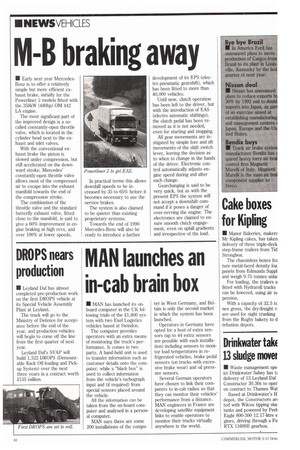43 braking away
Page 12

If you've noticed an error in this article please click here to report it so we can fix it.
• Early next year MercedesBenz is to offer a relatively simple but more efficient exhaust brake, initially for the Powerliner 2 models fitted with the 358kW (480hp) OM 442 LA engine.
The most significant part of the improved design is a socalled constantly-open throttle valve, which is located in the cylinder head next to the exhaust and inlet valves.
With the conventional exhaust brake the piston is slowed under compression, but still accelerated on the downward stroke. Mercedes' constantly-open throttle valve allows most of the compressed air to escape into the exhaust manifold towards the end of the compression stroke.
The combination of the throttle valve and the standard butterfly exhaust valve, fitted close to the manifold, is said to give a 60% improvement in engine braking at high revs, and over 100% at lower speeds. In practical terms this allows downhill speeds to be increased by 35 to 65% before it becomes necessary to use the service brakes.
The system is also claimed to be quieter than existing proprietary systems.
Towards the end of 1990 Mercedes-Benz will also be ready to introduce a further development of its EPS (electro pneumatic gearshift), which has been fitted to more than 40,000 vehicles.
Until now, clutch operation has been left to the driver, but with the introduction of EAS (electro automatic shiftings), the clutch pedal has been removed as it is not needed, even for starting and stopping.
All gear movements are instigated by simple fore and aft movements of the shift switch lever, leaving the decision as to when to change in the hands of the driver. Electronic control automatically adjusts engine speed during and after each change.
Gearchanging is said to be very quick, but as with the present EPS the system will not accept a downshift command if it poses a danger of over-revving the engine. The electronics are claimed to ensure smooth clutch engagement, even on uphill gradients and irrespective of the load.










































































































































































